"Laos: Hidden Treasures and the Magic of the 4000 Islands"
"Explore Laos, a landlocked country full of hidden riches, and discover the 4000 Islands — gems of the Mekong where nature, peace, and tradition meet."
BLOG LAOS
8/8/202510 min read
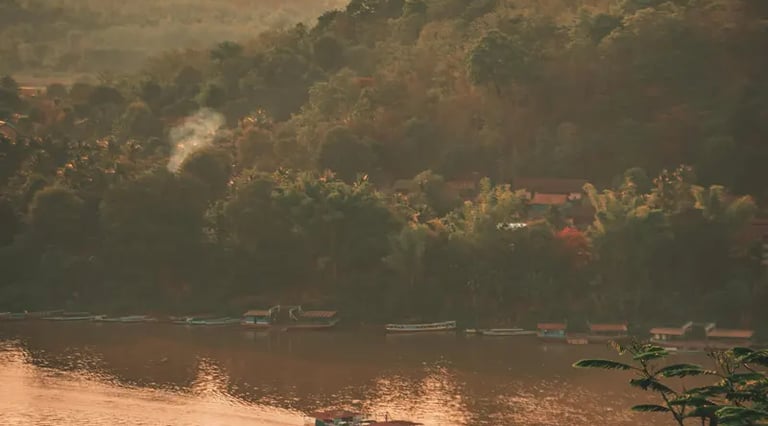

🇱🇦 Laos: Hidden Wonders and the Magic of the 4000 Islands
Explore Laos, a landlocked country full of unexpected treasures, and discover the 4000 Islands — gems of the Mekong where nature, peace, and tradition meet.
🗺️ The Marvels of Laos
Landlocked between five powerful neighbors, Laos is one of the few countries in Southeast Asia with no access to the sea. Yet, far from being a limitation, this geographical situation gives the country a unique, preserved, and mysteriously rich character.
Largely rural and lightly industrialized, Laos hides unexpected treasures: primary forests, ancestral temples, diverse ethnic groups, and above all, the Mekong River, the country’s true lifeline.
In the south, where the Mekong spreads out like a fan, it creates a fascinating fluvial archipelago — the 4000 Islands (Si Phan Don). Far from mass tourism, this region captivates visitors with its slowness, serenity, and natural beauty.
But to understand the 4000 Islands, you must first understand the Mekong.
🌊 The Mekong: A Mythical River of Asia
📌 Overview
The Mekong River is one of the longest in Asia, stretching about 4,350 kilometers. It originates in the high Tibetan plateau, in China’s Qinghai province at around 5,200 meters elevation, and flows through or borders six countries before reaching the South China Sea via the vast Vietnamese delta.
Here is an approximate breakdown of its length by country:
China (Lancang): 1,200–1,300 km – winding through mountainous regions in Qinghai and Yunnan
Myanmar (Burma): 20–30 km – forming a short border
Laos: about 1,900 km – where it shapes the landscape and serves as a natural border with Thailand
Thailand: 700–850 km – along the Lao border and within parts of the country
Cambodia: around 500 km – receiving the Tonlé Sap River as a major tributary
Vietnam: 250–300 km – forming the fertile Mekong Delta before emptying into the sea
The Mekong’s impact is enormous — geographically, economically, and culturally.
💰 Economic Role
The Mekong is essential to life in Laos, Cambodia, and beyond. It irrigates vast rice fields, supports local fisheries, and serves as a natural transport route for goods and people. It’s a vital economic artery for millions who rely on it for food and livelihoods.
🎎 Cultural Importance
To the people of Laos, the Mekong is sacred. It appears in legends, ceremonies, and daily rituals. It symbolizes life, abundance, and continuity, and remains at the heart of the Lao spiritual worldview.
🌿 Ecological Significance
The Mekong is one of the most biodiverse rivers in the world, home to over 1,200 fish species, including the mythical giant catfish. It sustains aquatic ecosystems and the surrounding wetlands, forests, and farmlands, playing a central role in the region’s ecological balance.
🌍 Current Challenges
🚧 Hydroelectric Dams
The rise of mega dams, especially in China and Laos, alters water flow, blocks fish migration, and disrupts sediment transport, threatening downstream agriculture and biodiversity.
🌦️ Climate Change
Rising temperatures, erratic rainfall, more frequent droughts and floods, and sea-level rise threaten the Mekong Delta and food security for millions.
🧴 Pollution
Plastic waste, untreated sewage, and mining runoff (heavy metals) are degrading water quality and threatening human and ecological health.
🎣 Overfishing
Growing populations and unregulated fishing are leading to a sharp decline in fish species, threatening the survival of traditional river communities.
🗺️ Transboundary Tensions
Governance of the Mekong remains a major challenge. Cooperation, data sharing, and inclusive management among countries like China, Laos, Thailand, Cambodia, and Vietnam are essential for long-term sustainability.
✅ Conclusion: The Mekong’s Legacy
The Mekong is not just a river — it’s a symbol of life, culture, and resilience. And in southern Laos, it takes on an almost surreal form, dividing into thousands of islets and channels: the 4000 Islands.
🏝️ Now We Come to the 4000 Islands
After drifting with the Mekong’s slow rhythm, watching it nurture rice fields and carry history in its current, we arrive at a place where the river scatters into a labyrinth of islands. Welcome to Si Phan Don — the 4000 Islands.
During the dry season, nearly 4000 landforms emerge: sandy banks, forested islets, small farms and villages. Some are tiny, barely large enough for a single tree. Others are bustling with life, schools, pagodas, buffaloes, and markets. It’s less about the number — and more about the feeling.
In the Champassak province, close to the Cambodian border, the Mekong stretches up to 14 kilometers wide. Water is everywhere — shimmering, alive, and hypnotic.
To reach the islands, most travelers start from Pakse, take a road south to Nakasong, and hop on a long-tail boat gliding through the river’s maze. The mainland fades — and the islands begin to whisper their stories.
🧭 Village Life in the 4000 Islands
There are no cities here — just villages clustered around temples, markets, and ferry docks. They form the soul of Si Phan Don, blending rural life, spirituality, and ancient tradition.
🌾 Don Khong — Muang Khong, the Local Hub
The largest island, Don Khong hosts Muang Khong, the area's main town. Around 8,000 people live here, spread across villages. The island has a market, post office, school, bank, and temples.
Visitors will find comfortable guesthouses, family-run homestays, and simple hotels with river views. The island is high enough to avoid seasonal floods, making it a safe and peaceful base.
🎒 Don Det — Laid-Back and Popular
Don Det is a favorite for backpackers. Its dirt paths, stilt houses, and riverside cafés make it a chill spot. Around 1,200–1,500 residents live here, with many guesthouses, bike rentals, and small eateries.
It’s a blend of rural Lao life and alternative tourism. Some areas may flood during the rainy season, but stilt construction makes it manageable.
🧘 Don Khon — Tranquility and Tradition
Connected to Don Det by a colonial-era French bridge, Don Khon is quieter and more traditional. Villages like Ban Khon Tai and Ban Khon Neua are home to 1,000–1,200 Lao Buddhist families.
Here, fishing with traditional traps is common. The Li Phi waterfalls attract visitors, and festivals like Boun Ok Phansa (end of Buddhist Lent) mark spiritual moments in village life.
🎎 Folklore and Local Culture
Life follows the Buddhist calendar. Every village has a wat (temple), and daily rituals include offering alms to monks, ceremonies for birth and death, and ancestral blessings.
Festivals include:
Boun Suang Heua – Longboat races
Boun Pi Mai – Lao New Year (April water festival)
Baci – Soul-calling ceremony
The local dialect is influenced by Cambodian tones, and values like humility, politeness, and respect for elders are deeply rooted.
🚣 Tourism — Light, Gentle, and Local
Tourism exists, but remains modest:
Guesthouses and small hotels
Bilingual menus with Lao and international dishes
Eco-tourism activities: biking, kayaking, dolphin watching
No mass tourism, no big resorts — just authentic, quiet travel.
🌧️ When the Mekong Overflows…
From June to October, the river swells. Some smaller or lower islands become submerged, disappearing for weeks. But the main villages are ready: homes on stilts, footpaths that adapt, and lives that go on, as they always have — to the rhythm of the Mekong.
🛶 Visiting the 4000 Islands: A Slow Journey by River
When you choose to visit the 4000 Islands, you're not just picking a destination — you're choosing to slow down, to let go, to pass through a quieter, more fluid version of Laos, far from the beaten track. The journey to Si Phan Don is already part of the experience.
The usual starting point is Pakse, the main city in southern Laos, accessible by bus from Vientiane, Savannakhet, or even from Thailand or Cambodia. From Pakse, you head south by road to the small port of Nakasong — about a 3-hour drive by minivan or local bus. The road crosses peaceful countryside, rice fields, and sleepy villages.
Once in Nakasong, the magic begins: a small riverside dock, a few long-tail boats, a ticket bought from a roadside stall… and then you're off — 10 to 15 minutes across the Mekong, heading to Don Det, Don Khon, or Don Khong, depending on your choice. The river opens wide in front of you — vast, powerful, peaceful. The air shifts. The sounds fade. You leave behind the asphalt world and enter one made of wood, water, and hammocks.
Once on the islands, there are no cars, no honking, only dirt paths, bicycles, and the steady rhythm of the river to guide you. Whether you pick a bungalow overlooking the sunset, a simple room in a traditional house, or a guesthouse in the heart of a village, the welcome is warm, sincere, and unpretentious.
Visiting the 4000 Islands means embracing a different way of traveling — at the pace of the Mekong, at the pace of life itself.
👉 You can also click on this page where I share a 15-day itinerary in Laos, including how to get there.
🧭 In Conclusion
In the 4000 Islands, you won’t find a city. But you will find villages full of soul, living traditions, welcoming people, and a deep connection to the water that shapes every part of existence. The Mekong isn’t just scenery — it is life, rhythm, memory, and sometimes even challenge.
These islands reveal a rare face of Laos, still preserved, where you can live close to the people, sleep in simple guesthouses, taste local cuisine, learn to greet in Lao, and let the river carry you — nothing more, nothing less.
The 4000 Islands offer an almost surreal, aquatic Laos, a place to disconnect, to breathe differently, to listen to the river more than to yourself. It’s not just another tourist spot — it’s a state of mind, a pause in the world, a place to find yourself — or perhaps, to gently forget yourself, just enough.
🌿 FAQ – 4000 Islands, Laos: Environment, Ecosystems & Water Challenges
💧 Why is the 4000 Islands region considered a unique environment in Southeast Asia?
The 4000 Islands are part of one of the largest river basins in the world: the Mekong Basin. This tropical wetland ecosystem is rich in biodiversity and in interactions between rivers, underground aquifers, and plant and animal life. During the dry season, the islands emerge, revealing the importance of temporary lakes, canals, and wetlands where life thrives.
🐟 What kinds of ecosystems are found in this area?
This tropical region hosts a wide variety of ecosystems, including:
Riparian forests,
Floodplains rich in wetland vegetation,
Oxbow lakes and river arms, providing shelter for aquatic species (fish, birds, amphibians),
And riverbanks colonized by plant species adapted to the changing water flow.
🐘 How important is the region’s wildlife and vegetation?
The 4000 Islands support exceptional wildlife, including endangered species like the Irrawaddy dolphin. Biodiversity is high thanks to a mosaic of micro-habitats created by seasonal flooding. Several endemic animal and plant species thrive here, adapted to the dynamic wet environment.
🌊 How does the Mekong’s flow influence life on the islands?
The rhythm of the river determines everything. During the rainy season, floods bring nutrients, shape the riverbanks, recharge aquifers, and support the fertility of the soil. In the dry season, the retreat of water reveals the islands again and concentrates life around the remaining humid areas. This natural hydrological cycle is vital to the region’s ecological balance.
🚧 Do dams on the Mekong have an impact?
Yes. The construction of dams upstream, especially in China and Laos, significantly alters the river’s natural flow. This disrupts flood patterns, degrades water quality, blocks fish migration, and threatens the local ecosystems. It also raises important questions about shared water governance among neighboring countries.
🏝️ Can the islands be submerged?
Yes. Some small low-lying islands are temporarily submerged during the rainy season. The main islands — Don Khong, Don Det, and Don Khon — are more stable, but their lower areas may still flood. This is part of the natural functioning of the watershed, though it can pose challenges for agriculture and other human activities.
🚱 Is the Mekong’s water drinkable?
No, the river water is not potable without treatment. Water quality is affected by agricultural runoff, domestic waste, plastic pollution, and boat effluents. While some basic sanitation systems exist, access to safe drinking water is still limited in many villages. Raising awareness about water resource preservation is crucial.
🌾 What are the main human activities on the islands?
Small-scale fishing
Rice cultivation (depending on flood cycles)
Tropical vegetable farming
Eco-responsible tourism
Family-run shops and services
These activities depend heavily on freshwater availability, aquifer levels, and seasonal stability.
🌱 Is there a risk of drought?
Yes. In years marked by climate change, the Mekong experiences troubling droughts that impact:
Drinking water supply
Aquatic wildlife
Crop production
Water levels in lakes and tributaries
This makes sustainable water management even more critical.
🧼 What is being done to protect the 4000 Islands' environment?
Local and international NGOs work with communities to:
Monitor water quality
Promote eco-friendly farming
Protect sensitive wetlands
Encourage sustainable tourism that respects natural resources
The preservation of wetland ecosystems is essential for natural water regulation and biodiversity.
🐚 What happens to waste and wastewater in the villages?
In many areas, sanitation systems remain basic. Some villages use pit latrines or discharge wastewater directly into the river. This poses risks to water quality and public health. Efforts are underway to improve wastewater management through community-based projects.
🧭 How important is the watershed in this region?
The Mekong watershed directly influences all activity in the 4000 Islands. It captures rainfall, feeds aquifers, regulates water flow to wetlands, and connects surface and underground water systems. A healthy watershed is key to ensuring clean water, ecological stability, and climate resilience.
🌊 Is erosion a problem in the 4000 Islands?
Yes. Erosion is significant, especially during floods. The powerful flow of the Mekong wears away slopes, damages riverbanks, and alters natural waterways. It also threatens riparian vegetation, which is vital for soil stability. Locals often protect their land with bamboo barriers, planting trees, or natural retaining walls.
💦 What are the main water resources in the region?
The 4000 Islands benefit from abundant water sources, including:
Surface water from the Mekong and its channels
Shallow aquifers (phreatic water) used for drinking
Deep groundwater tapped for irrigation and household use
However, these resources are vulnerable to overuse, dry seasons, and climate variation.
🧪 Are there any water purification systems?
Water purification systems are mostly rudimentary or absent on the islands. There are no modern treatment plants. Natural purification occurs through vegetation, wetland soil filtration, and traditional practices. This makes the area vulnerable to diffuse pollution and health risks, highlighting the need for better water management awareness.
🌱 What role do wetlands and marshes play in the 4000 Islands?
Wetlands (marshes, ponds, seasonal peatlands) play a critical role:
Acting as natural sponges during floods
Enhancing biodiversity
Filtering and improving surface water quality
Preserving these natural aquatic environments is a priority in any integrated water management policy.
🌀 What happens during the dry season (low water period)?
During the dry season (December to April), the Mekong’s flow rates drop significantly, leading to:
Reduced available surface water
Lower aquifer recharge
Strain on aquatic ecosystems (low oxygen, warmer temperatures, fish die-offs)
Over-extraction of water, particularly for irrigation, worsens these effects. A balanced approach between human use and ecosystem health is essential.
🌍 Are the 4000 Islands subject to environmental regulations?
Laos has its own environmental laws, though there’s no direct equivalent to France’s Environmental Code. However, public policies — often supported by NGOs and international partners like the Rhône-Mediterranean-Corsica Water Agency — are inspired by European principles of integrated watershed management.
🌧️ What is an Sdage, and is there one in Laos?
A Sdage (Master Plan for Water Development and Management) is a French tool for basin-scale planning. In Laos, similar strategies exist under IWRM (Integrated Water Resources Management), coordinated at the level of the Mekong Basin. These plans aim to balance ecosystem protection, drinking water supply, human activities, and hydraulic development.
🧭 How are natural watercourses, aquifers, and oceans connected?
The natural waterways (Mekong channels, streams, canals) are linked to:
Aquifers, which either supply or absorb water depending on the season
Wetlands, acting as buffers between surface and groundwater
And finally, the Mekong Delta, which empties into the South China Sea in Vietnam
This complex hydrological dynamic is threatened by dams, drainage alterations, and climate change.
🌾 Is irrigation common on the 4000 Islands?
Yes, especially on Don Khong, where residents grow rice. Irrigation is mostly manual, using canals or pumps from the river. Water availability depends heavily on seasonal flows. Hydrological imbalance (e.g., drought or low flows) can endanger crops and food security.
🌊 Can natural environments be developed without harming them?
That is the key challenge. Eco-friendly development — like elevated walkways, wooden trails, and sustainable lodges — can promote tourism without damaging ecosystems. This requires:
Respecting the islands’ carrying capacity
Adapting structures to floods and wetland zones
Prioritizing local, sustainable projects that protect environmental balance
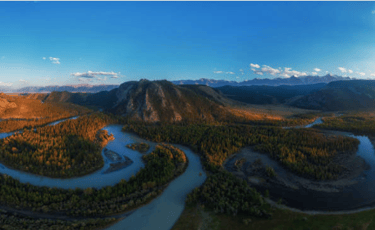
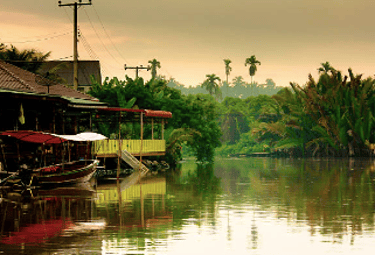
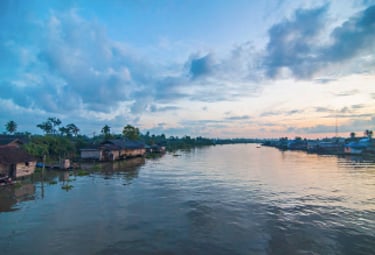
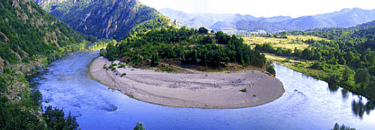




Travel
Asia Blog – Practical tips about Vietnam, Thailand, South Korea, Cambodia... visas, eSIMs, banking, travel budget, and more.
© 2025. All rights reserved.
